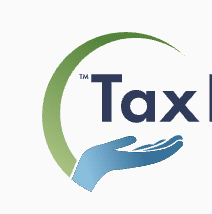
Tax planning strategies involve proactive steps you can take throughout the year to legally minimize your tax burden and maximize your financial position.
From setting up automatic retirement contributions to strategically timing investment sales, effective tax planning puts you in control of your tax situation rather than leaving it to chance.
Whether you're managing your own taxes or comparing our best tax relief companies for complex situations, implementing these strategies can significantly reduce what you owe while building long-term wealth.
Key Insights
- Year-round tax planning can save thousands and help avoid penalties.
- Key strategies include maximizing retirement contributions, harvesting tax losses, and timing major financial decisions strategically.
- Small business owners have additional opportunities through business deductions, entity selection, and strategic income timing.
Why Tax Planning Matters
Tax planning goes far beyond simply filing your return correctly. It's about structuring your financial decisions throughout the year to legally minimize your tax burden and keep more money working for you.
The Cost of Ignoring Tax Planning Strategies
Many people leave significant money on the table by not engaging in proper planning. "It's not uncommon for higher-income households to leave five to six figures on the table over a few years," says Mark Stancato, founder and lead advisor at VIP Wealth Advisors.
"That could be due to failing to harvest tax losses, missing Roth conversion windows, selling investments inefficiently, or not coordinating equity compensation with their broader tax picture," adds Stancato.
Key Benefits of Year-Round Tax Planning
- Lower your overall tax bill: Planning enables you to take advantage of tax credits, deductions, and strategic retirement contributions that can substantially reduce what you owe.
- Avoid unpleasant surprises: Paying attention to taxes throughout the year helps you avoid large, unexpected bills and penalties at filing time.
- Make smarter financial decisions: Tax planning gives you more time to consider the tax impacts of major life events like getting married, buying a home, or selling investments.
- Keep more cash throughout the year: Adjusting your withholdings properly means avoiding overpayment that results in large refunds—money that could have been earning returns in your accounts instead.
- Improve overall financial planning: Understanding your tax situation helps you balance your finances better and keep more money available for investments, business opportunities, or personal goals. If you fall into tax debt, your business can be in danger.
Common Tax Planning Myths
- Tax planning is only for wealthy people: While high-net-worth individuals may benefit more from complex strategies, middle-income families and those with side businesses can still achieve significant savings through basic planning techniques.
- Getting a big tax refund is good: A large tax refund means you overpaid during the year and gave the government an interest-free loan when that money could have been working for you.
- Tax planning is cheating the system: Legal tax planning is encouraged by the tax code, which is designed to reward certain behaviors like saving for retirement, buying homes, and supporting charitable causes.
- I can only do tax planning during tax season: The most effective strategies require year-round attention and can't be implemented retroactively.
Top Tax Planning Strategies for Individuals
Effective individual tax planning combines several proven strategies that work across different income levels and life situations.
Maximize Tax-Advantaged Retirement Contributions
Contributing to retirement accounts offers immediate tax benefits while building long-term wealth. You can choose traditional accounts to reduce current taxes or Roth accounts for tax-free future withdrawals.
Set up automatic monthly contributions to reach annual limits without manual effort, and ensure you're capturing any employer matching contributions available.
For 2025, you can contribute up to $23,500 to a 401(k) with an additional $7,500 catch-up contribution if you're 50 or older. IRA contribution limits are $7,000 with a $1,000 catch-up provision.
Implement Tax-Loss Harvesting
Tax-loss harvesting involves selling investments at a loss to offset gains from other investments or reduce taxable income. If you have $5,000 in stock gains but sell $4,000 worth of stocks at a loss, you only pay capital gains taxes on $1,000.
If you have no gains but realize $4,000 in losses, you can offset $3,000 of ordinary income and carry forward $1,000 in losses to next year.
Strategic Use of Deductions and Credits
Often-overlooked deductions and credits include:
- Lifetime Learning Credit: Up to $2,000 credit for qualified education expenses for you, your spouse, or dependents.
- Saver's Credit: Up to $1,000 ($2,000 for couples) for retirement account contributions, subject to income limits.
- Home office deduction: Self-employed individuals can deduct expenses for space used exclusively for business.
- State sales tax deduction: Itemizers can deduct state and local sales taxes instead of income taxes, particularly beneficial in states without income tax.
Time Major Financial Decisions Strategically
Consider the tax implications of major life events:
- Getting married: Often enables joint filing with lower taxes, but combined income might push you into higher brackets or eliminate certain credits.
- Buying a home: Generally allows deduction of mortgage interest and up to $10,000 in property taxes.
- Having children: Introduces valuable tax credits, including the Child Tax Credit and Earned Income Tax Credit.
- Starting a business: Creates numerous deduction opportunities for home office space, supplies, and business expenses.
- Retiring: Required minimum distributions begin at age 73, but Roth IRA withdrawals can be tax-free if you're over 59 and the account is at least five years old.
Optimize Charitable Giving
Structure charitable donations to maximize tax benefits by donating appreciated stock instead of cash, which allows you to avoid capital gains taxes while claiming the full fair market value deduction.
Consider bunching multiple years of donations into a single year to exceed the standard deduction threshold, or use donor-advised funds to make large contributions while spreading actual charitable distributions over time.
Real-World Tax Planning Strategies Success
Proactive tax planning can lead to significant tax savings. "One client gave $500,000 to each of three children from appreciated investments," says Gregory Furer (CFP, CRPC), founder and CEO of Beratung Advisors.
"We directed the lowest capital gain assets to the child making charitable gifts and helped them replace those positions in their own accounts," explains Furer. The result was over $400,000 in capital gains savings without changing their intentions.
Essential Business Tax Planning Strategies
- Deduct all legitimate business expenses: Business owners can deduct home office costs, supplies, utilities, equipment, and 50% of business meals when they're directly related to business activities.
- Maximize the Qualified Business Income (QBI) deduction: This allows eligible business owners to deduct up to 20% of their net business income, providing substantial savings for qualifying businesses.
- Optimize retirement contributions: Business owners can contribute significantly more to retirement accounts than employees. A Simplified Employee Pension (SEP) IRA allows contributions up to the lesser of 25% of compensation or $70,000 in 2025.
- Use strategic income and expense timing: Defer current-year income to next year if you expect lower rates, or accelerate expenses into the current year to offset higher income.
- Take advantage of Section 179 deductions: Immediately deduct the full cost of business equipment rather than depreciating it over several years, providing significant current-year tax relief.
Choose the Right Business Structure
Your business entity choice significantly impacts your tax planning options. Sole proprietorships are simple but offer limited tax benefits. LLCs provide flexibility and can elect different tax treatments.
S-Corp election can help avoid self-employment taxes on profits, but requires more administrative complexity. The best choice depends on your income level, growth plans, and administrative capacity.
Commonly Missed Business Deductions
- Home office expenses: Deduct a portion of rent, utilities, property taxes, and related expenses for space used exclusively for business.
- Cell phone and internet costs: Deduct the business portion of personal devices and connections used for work.
- Business mileage: Claim 70 cents per mile for 2025 when using personal vehicles for business purposes.
- Education and training: Write off costs for courses, conferences, and training that improve your business skills and knowledge.
- Living and working abroad: Check to see if you qualify for relief provisions as an American abroad before paying double income tax on the same earnings.
Manage Estimated Tax Payments Effectively
- Use the safe harbor rule: Avoid underpayment penalties by paying either 90% of this year's tax liability or 100% of last year's liability, whichever is less.
- Calculate based on real-time income: Track monthly income and adjust quarterly payments accordingly, rather than using outdated projections.
- Set aside funds systematically: Reserve 25-30% of your monthly income in a separate account for tax payments.
- Automate when possible: Use EFTPS or IRS Direct Pay to schedule payments automatically if your income is relatively stable.
Strategic Family Employment
Hiring family members can provide tax advantages. Paying your spouse or children for legitimate business work reduces your taxable income while potentially dropping you into lower tax brackets.
Children under 18 working for a sole proprietorship aren't subject to FICA taxes, creating additional household tax savings.
Using Tax Software or a CPA
The choice between DIY tax software and professional help depends on the complexity of the situation and potential tax savings.
- Tax software works best for: W-2 income, standard deductions, and straightforward situations. It's cost-effective but can be reactive rather than proactive.
- Hire a professional for: Multiple income sources, investments, rental properties, or business income. Often worthwhile for those earning $150,000+ annually.
- Tax attorney vs. CPA: CPAs handle most tax planning and preparation needs, while tax attorneys are better for legal disputes, audits, or complex estate issues.
- Questions to ask professionals: What types of clients do you work with? How do you approach year-round planning? How do you charge and protect personal information?
- Professional costs: Range from $200-$500 for basic returns to $1,500-$5,000+ for complex situations involving S-Corps or high-net-worth planning.
Year-Round Tax Planning Tips
Consistent attention throughout the year produces better results than last-minute filing season scrambling.
- Review quarterly: Track income and expense fluctuations affecting your tax position and monitor retirement contribution progress.
- Make estimated payments: Submit quarterly payments by deadlines (April 15, June 15, September 15, January 15) to avoid penalties.
- Track deductible expenses: Maintain records of business mileage, meals, supplies, and other items that reduce your taxable income.
- Stay organized: Create document folders for income, expenses, investments, and real estate using spreadsheets or accounting software to avoid common tax errors.
- Adjust withholdings: Review W-4 settings when circumstances change—large refunds indicate overpayment, while life changes typically require adjustments.
Conclusion
Effective tax planning strategies require consistent attention throughout the year, not just during filing season. By maximizing retirement contributions, strategically timing financial decisions, and maintaining good records, you can significantly reduce your tax burden while building long-term wealth.
For those facing existing tax problems, our recommended tax relief services can help resolve issues while you implement better planning for the future.
Frequently Asked Questions
1. When should I start implementing tax planning strategies?
Start immediately, regardless of the time of year. Many strategies work best when implemented early and consistently throughout the year rather than waiting for the next tax season.
2. How much can effective tax planning save me?
Savings vary by situation, but higher-income households often leave five to six figures on the table over several years through poor planning, according to tax professionals.
3. Do I need a CPA for basic tax planning?
Not necessarily. Simple situations with W-2 income and standard deductions can often be handled with quality tax software, while complex situations benefit from professional guidance.



